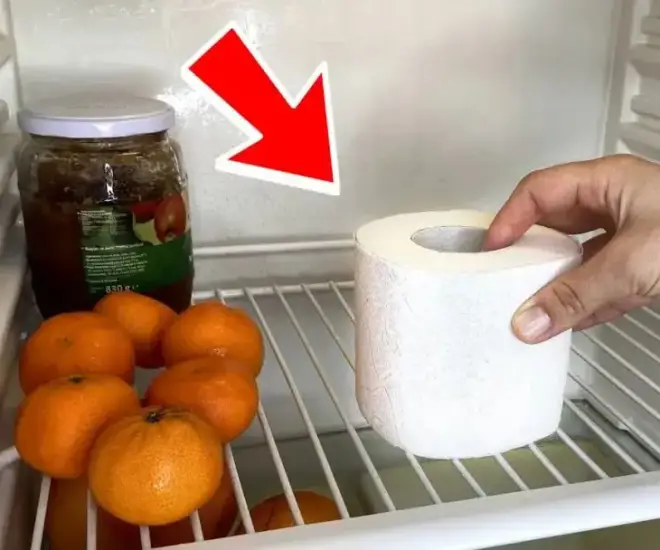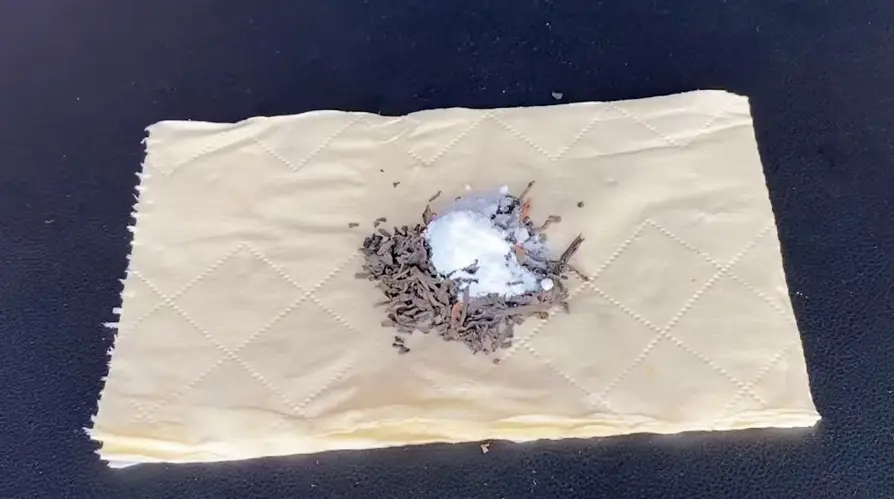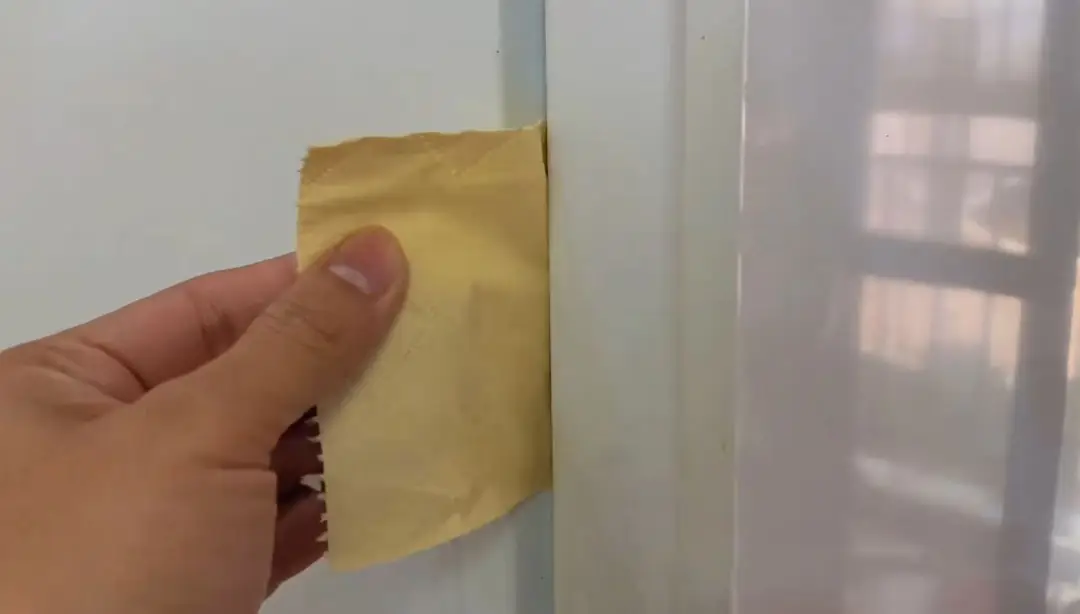The Surprising Benefits of Placing a Toilet Paper Roll in Your Fridge

It might sound magical, but it’s true! Let’s explore the details:
– Absorbs moisture, prevents frost build-up: Saves energy and peace of mind
Have you noticed how direct cooling refrigerators tend to develop frost on the inner walls over time? Thicker frost leads to reduced cooling efficiency and increased electricity consumption.
Here’s where a dry toilet paper roll comes to the rescue. Placing it in the fridge absorbs excess moisture, reducing frost buildup. Less frost means the fridge works more efficiently, resulting in energy savings.
As a bonus, the paper also absorbs odors, preventing food from acquiring unpleasant smells. If the paper becomes damp over time, don’t discard it! Simply dry it and reuse it to be both economical and environmentally friendly.
– DIY tea deodorizer bag: Fresh and odor-free
Is your fridge emitting unpleasant odors? Combine toilet paper, tea leaves, and baking soda to create a natural deodorizer bag!
It’s simple to make:
– Take a sheet of toilet paper and add some tea leaves (black or green tea, even expired tea works fine);
– Mix in a spoonful of baking soda (a natural absorbent and antibacterial agent);
– Secure the package with a rubber band and place it in the fridge.
Tea leaves have a natural fragrance and a porous structure that absorbs odors. Baking soda enhances antibacterial and moisture-absorbing properties. Within a few days, you’ll notice the unpleasant odors replaced by a gentle tea fragrance.

– Test fridge door seal with toilet paper: For a tighter seal
The rubber gasket on your fridge door can become worn and deformed over time, resulting in an improper seal. This allows cold air to escape, leading to increased electricity consumption and potential food spoilage.
To test the seal, open the fridge door and place a piece of paper at the edge. Close the door and try to pull the paper out. If it slides out easily, the gasket is not sealing properly.
Instead of replacing the gasket, try using a hairdryer on a warm setting. Hold it about 10 inches away from the gasket for about a minute. Then, use your hands to reshape the gasket to its original form and close the fridge door for 2-3 minutes.
Test again with the paper. If it’s now difficult to pull out, the seal has improved! Performing this periodically helps save energy and extends the life of your fridge.

Tips to Save Energy for Your Fridge
– Place the fridge in a well-ventilated area, away from direct sunlight
Maintain a distance of at least 10 cm between the fridge and the wall. Avoid placing it near heat sources like ovens or stoves. Operating in a hot environment forces the fridge to work harder and consume more energy to maintain its internal temperature. Choosing a cool, well-ventilated spot improves efficiency and reduces compressor strain.
– Avoid putting hot food directly into the fridge
Placing hot food in the fridge increases the internal temperature, causing the appliance to work harder to cool down. This not only wastes energy but also shortens the fridge’s lifespan. Allow food to cool to room temperature before storing it.
– Minimize frequent or prolonged door openings
Each time the door is opened, cold air escapes, and the fridge has to work to cool down again, wasting energy. Organize your food logically for quick access, and avoid lingering in front of the open fridge while deciding what to eat.
– Regularly clean the fridge and condenser coils
A dirty fridge, especially the condenser coils at the back, can hinder heat dissipation, causing the compressor to work harder. Clean the coils every 2–3 months to ensure optimal performance and energy efficiency.
– Inspect and maintain the door gasket
The rubber gasket around the fridge door seals in the cold air. If it becomes worn or deformed, cold air can escape, leading to increased energy consumption. Test the seal by placing a piece of paper in the door—if it pulls out easily, the gasket may need replacement or adjustment.






























